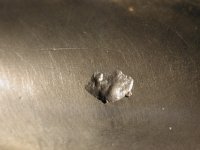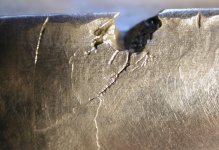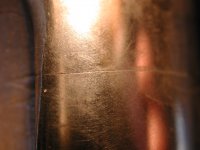porthole
Retired
FAA-H-8083-30, Aviation Maintenance Technician Handbook-General, FAA-8083-31, Aviation Maintenance Technician Hanbook-Airframe Volume 1 and AC 43-4A. The dark lines running perpendicular to the race or parallel with the rollers, (water marks) is usually caused by water between the bearing roller and the race of a stationary bearing. The water acts as an electrolyte or medium allowing for a small electric current to start between the two surfaces causing dissimilar metal corrosion and eventually pitting of one or both surfaces. In the early stages the marks can probably be lightly buffed off because the corrosion is on the surface. Inter granular corrosion is caused by the same electrolyte action but between different alloys within the metal itself usually caused by lack of uniformity during the manufacturing process i.e. improper heat treating. Aluminum structures like wing spars are more susceptible to this type of corrosion but it can and does occur in steel alloys. Inter granular corrosion can show up as a discoloration of the material or not at all but either way since it is corrosion that starts below the surface it can't be buffed out. The more technical name for these types of corrosion is electrochemical corrosion. Heat damage will cause a blueish color in the race or rollers and more advanced heat damage will cause galling. Galling is caused when the surface of the roller and surface of the race get hot enough to weld together and as the bearing moves or turns a layer of welded surface material is pulled up from the race or off of the roller.
I would be interested in the text that refers to Inter granular corrosion caused by the two dissimilar metals in an electrolyte and how it relates to automotive wheel bearings.
Some typical corrosion issues are with different metals immersed in an electrolyte. The further apart on the nobility scale the greater the corrosion potential.
Boat trailers can be susceptible to this because of of trailer dunking when the bearings are warm or hot.
Anything I have seen on Inter granular corrosion points to it being more of an issue with the various stainless steels and aluminum.
The three main parts of a wheel bearing are similar metals, and a couple drops of water is not enough of an electrolyte, especially fresh water.
It has been my understanding that the corrosion / lines you find on a race, that are parallel with the rollers, is caused by "fretting"
Galling is not welding. Galling is caused by metals in sliding contact with improper lubrication.










